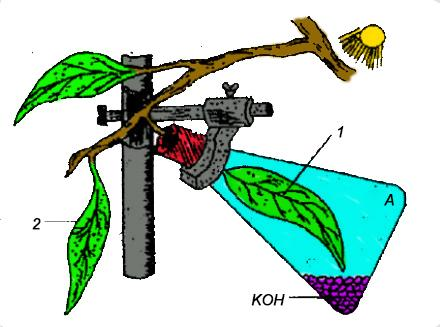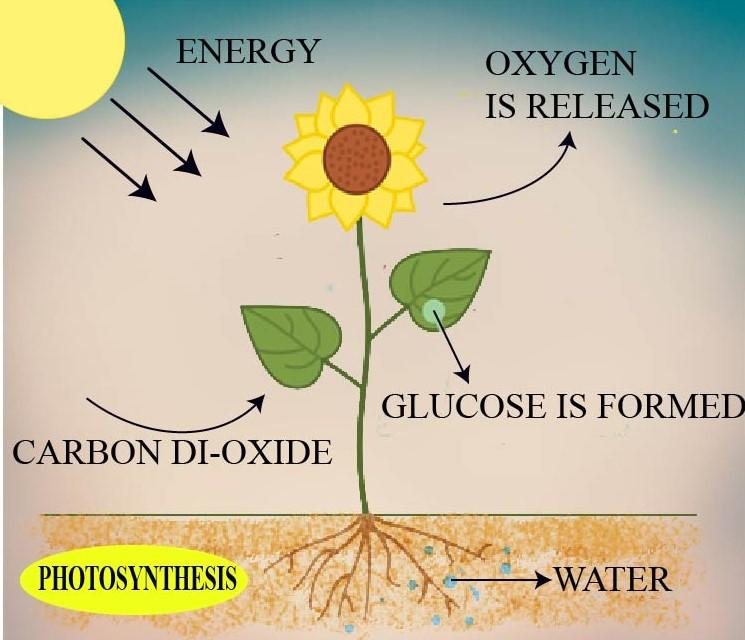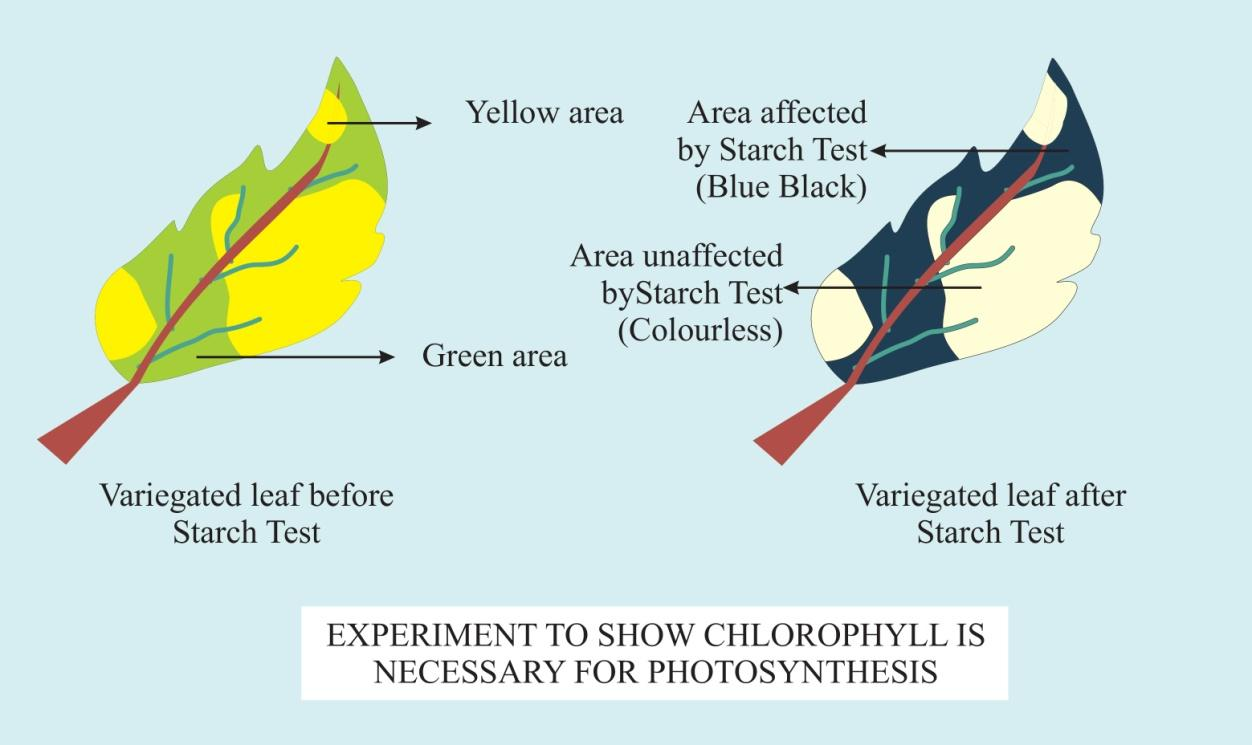
The figure given below represents an experiment to demonstrate a particular aspect of photosynthesis. The alphabet ‘A’ represents a certain condition inside the flask.

(i) What is the aim of the experiment?
(ii) Identify the special condition inside the flask.
(iii) Name an alternative chemical that can be used instead of KOH.
(iv) In what manner do leaves 1 and 2 differ at the end of the starch test?

Answer
559.5k+ views
Hint: The purpose of the experiment is to define the need for a greenhouse gas for the photosynthesis process. Inside the flask, the unique state is the lack of a compound whose solid shape is called dry ice. As an alternate chemical for KOH, carbonate products, caustic soda, etc. may be used.
Complete answer:
(i) The purpose of the experiment is to demonstrate the requirement of $C{ O }_{ 2 }$ for the photosynthesis process.
(ii) In the flask, the unique condition is that there is no $C{ O }_{ 2 }$ in the air within the flask as all carbon dioxide is removed by the KOH. Thus, the leaf does not receive ambient $C{ O }_{ 2 }$ within the flask.
(iii) The alternative chemicals that can be used instead of KOH are soda lime (NaOH & $Ca\left( { OH }_{ 2 } \right) $) , CaO (limestone) , and potassium pyrogallate.
(iv) The absence of $C{ O }_{ 2 }$ inside the flask does not allow the starch to be produced by leaf 1, and at the end of the starch test, the leaf does not turn black while leaf 2 turns black.


Carbon dioxide is a chemical compound that consists of one carbon and two atoms of oxygen. At a low concentration, it is found in the Earth's atmosphere and functions as a greenhouse gas, and its solid-state is called dry ice.
Limestone is a carbonate sedimentary rock consisting primarily of skeletal fragments of certain marine organisms. Example: Corals. The minerals calcite and aragonite, which are various crystal types of calcium carbonate $\left( CaC{ O }_{ 3 } \right) $, are its main materials.
Sodium hydroxide is an inorganic compound with the formula NaOH, also known as lye and caustic soda.
The iodine-starch test is a chemical reaction used to test for iodine or for the presence of starch.
Note: Photosynthesis is the process used by plants, algae, and some bacteria to harness energy from sunlight and turn it into chemical energy. The mechanism by which green plants and many other species turn light energy into chemical energy is photosynthesis. Light energy is consumed and used during photosynthesis in green plants to turn water, carbon dioxide, and minerals into oxygen and energy-rich organic compounds.
Complete answer:
(i) The purpose of the experiment is to demonstrate the requirement of $C{ O }_{ 2 }$ for the photosynthesis process.
(ii) In the flask, the unique condition is that there is no $C{ O }_{ 2 }$ in the air within the flask as all carbon dioxide is removed by the KOH. Thus, the leaf does not receive ambient $C{ O }_{ 2 }$ within the flask.
(iii) The alternative chemicals that can be used instead of KOH are soda lime (NaOH & $Ca\left( { OH }_{ 2 } \right) $) , CaO (limestone) , and potassium pyrogallate.
(iv) The absence of $C{ O }_{ 2 }$ inside the flask does not allow the starch to be produced by leaf 1, and at the end of the starch test, the leaf does not turn black while leaf 2 turns black.


Carbon dioxide is a chemical compound that consists of one carbon and two atoms of oxygen. At a low concentration, it is found in the Earth's atmosphere and functions as a greenhouse gas, and its solid-state is called dry ice.
Limestone is a carbonate sedimentary rock consisting primarily of skeletal fragments of certain marine organisms. Example: Corals. The minerals calcite and aragonite, which are various crystal types of calcium carbonate $\left( CaC{ O }_{ 3 } \right) $, are its main materials.
Sodium hydroxide is an inorganic compound with the formula NaOH, also known as lye and caustic soda.
The iodine-starch test is a chemical reaction used to test for iodine or for the presence of starch.
Note: Photosynthesis is the process used by plants, algae, and some bacteria to harness energy from sunlight and turn it into chemical energy. The mechanism by which green plants and many other species turn light energy into chemical energy is photosynthesis. Light energy is consumed and used during photosynthesis in green plants to turn water, carbon dioxide, and minerals into oxygen and energy-rich organic compounds.
Recently Updated Pages
Master Class 11 Chemistry: Engaging Questions & Answers for Success

Why are manures considered better than fertilizers class 11 biology CBSE

Find the coordinates of the midpoint of the line segment class 11 maths CBSE

Distinguish between static friction limiting friction class 11 physics CBSE

The Chairman of the constituent Assembly was A Jawaharlal class 11 social science CBSE

The first National Commission on Labour NCL submitted class 11 social science CBSE

Trending doubts
What is meant by exothermic and endothermic reactions class 11 chemistry CBSE

10 examples of friction in our daily life

One Metric ton is equal to kg A 10000 B 1000 C 100 class 11 physics CBSE

Difference Between Prokaryotic Cells and Eukaryotic Cells

What are Quantum numbers Explain the quantum number class 11 chemistry CBSE

1 Quintal is equal to a 110 kg b 10 kg c 100kg d 1000 class 11 physics CBSE




